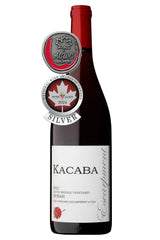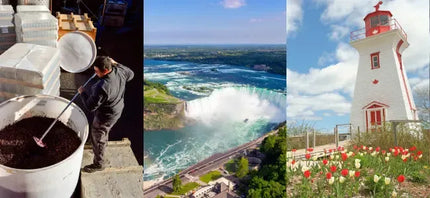You don’t need a sommelier pin or a thousand-dollar cellar to enjoy wine like a pro. In fact, one of the easiest ways to boost the flavour of nearly any red wine – especially more affordable bottles – is to decant it.
Decanting helps coax out flavours, soften harsh tannins, and bring a tired wine back to life. But just like overcooking a steak, too much of a good thing can ruin it.
In this beginner-friendly guide, we’ll break down:
-
Why decanting makes a difference
-
Which wines benefit the most
-
Tools you can use (and their pros & cons)
-
Why over-decanting, like the viral milk frother hack, can destroy your wine.
Why Decant
What is decanting and why do we decant?
“Decanting” is the process of pouring your wine bottle into another container for the sake of aerating the wine, opening its flavours, and helping to remove any sediment.
We do this because wine is alive. From bottling to pouring, it’s in a constant state of chemical change, balancing somewhere between a delicious beverage, and vinegar.
Most wines, especially younger reds or budget bottles, can taste a bit "closed" or “tight” right after opening. That’s because they’ve been sealed with minimal oxygen. With a little exposure to air, however, the wine can relax, opening up its aroma, texture, and flavour profile.
But while decanting is commonly associated with red wines, it's typically avoided for white, rosé, and sparkling wines because of their delicate structure and volatile aromatics.
White and rosé wines often rely on their crisp acidity, fresh fruit notes, and subtle floral or mineral aromas, all of which can dissipate quickly with too much exposure to air. Decanting them risks muting their freshness rather than enhancing it.
Sparkling wines, like Champagne or Prosecco, are even more sensitive: their defining characteristic, effervescence, is lost through decanting, as carbon dioxide escapes rapidly when exposed to open air.
For these styles, it’s usually best to serve them directly from the bottle to preserve their intended vibrancy and texture.
Signs a Wine Should Be Decanted:
-
It smells muted or a bit “funky” (but not out right “bad”) out of the bottle
-
It tastes sharp, bitter, or overly tannic
-
It’s young (under 5 years) and needs softening
-
It’s older (10+ years) and may have sediment to separate
-
It’s a value bottle that could use a little support
Wine Decanting Tools: Decanters vs Aerators
1. Classic Glass Decanter
 Elegant, timeless, and often beautiful to look at.
Elegant, timeless, and often beautiful to look at.
How to decant wine is surprisingly simple. Here, you pour your bottle into your glass vessel. We recommend ones studier glass decanters with a wide mouth for easy cleaning and storage.
Pros:
-
Great oxygen exposure
-
Visually and aesthetically pleasing
-
Helps remove sediment in older wines
Cons:
-
Bulky to store
-
Fragile
-
Needs a bit of time (15–60 mins of aeration)
-
Can be difficult to clean depending on the design
Best for: Dinner parties, bold reds, or wines with some age on them.
2. Wine Aerators
 Gadget-lovers, rejoice. These small tools force oxygen into wine as you pour.
Gadget-lovers, rejoice. These small tools force oxygen into wine as you pour.
Pros:
-
Fast results (seconds instead of minutes)
-
Easy to store
-
Budget-friendly
Cons:
-
May not remove sediment (depending on the model)
-
Results aren’t as dramatic as full decanting
-
Requires maintenance (cleaning, storage, inspecting for wear and tear)
Best for: Everyday reds and casual sipping moments.
3. The Viral Milk Frother Wine Hack
This hack was going viral as a way to quickly get the effect and taste of decanted wine. I will admit that I was a victim to this hack because I was 1) a wine noob and 2) looking for a way for me to enjoy the low-quality wine that I was drinking. I really expected this to be the best way to decant wine.
Spoiler: I never liked the glasses of wine that I did this to.
Since it has been at least a year since I have done this, I decided to do an experiment – we blended a glass of cabernet merlot from Reif Estate Winery with a milk frother to compare the taste with a control (normal pour) glass, to really see if it made a positive or negative difference.
Pros:
-
Smooths tannins almost instantly
Cons:
-
Destroys nuance
-
Kills aromatics
-
Adds unpleasant green/stemmy aromas
-
Makes your wine taste odd
Best for: Content creators. Not for your next date night.
What Happens After You Decant?
Let’s recap our real-life tasting comparison of our wine decanting tools:
-
Right out of the bottle: Sharper pronounced flavours, rigid tannins.
-
After decanting: Softer texture, chocolatey notes, deeper dark berry flavours.
-
Hyper-decanted with a milk frother: Stemmy, flavourless, and weird.
Even a few minutes in a proper decanter can transform an average wine into a great one. It doesn’t need to be a fancy, intensive process – how to decant wine the best way is to simply give your wine some time and room to breathe.
The best way to decant wine?
Have space? Go classic with a glass decanter.
Short on time? Use a wine aerator.
Thinking about using a milk frother? Save it for your lattes.
Now that you understand what decanting is and you’re ready to up your wine game, save money with our Canadian wine deals that you will not find anywhere else. Your next great glass of wine could be one order away.







